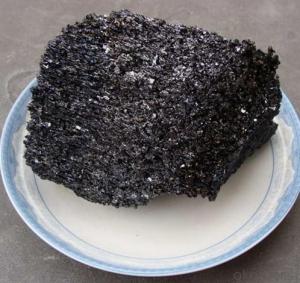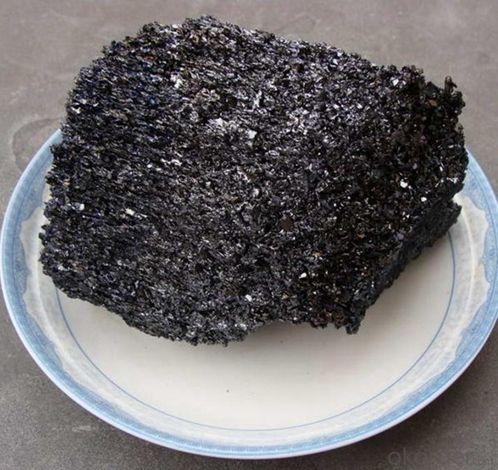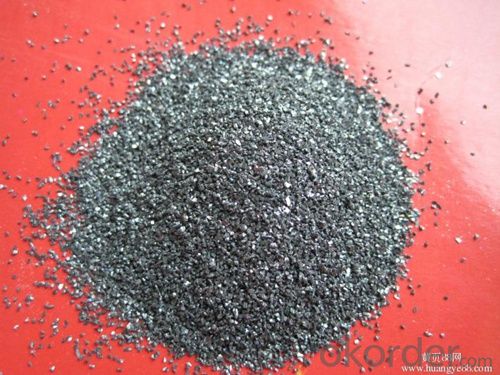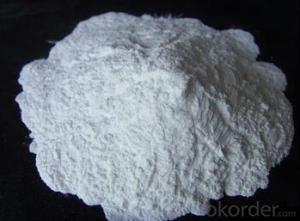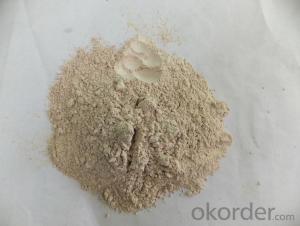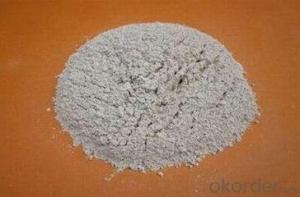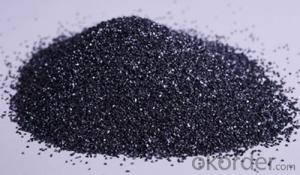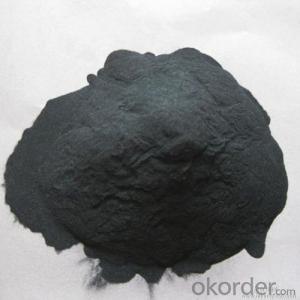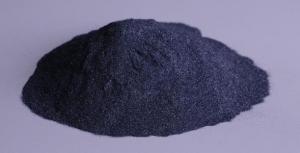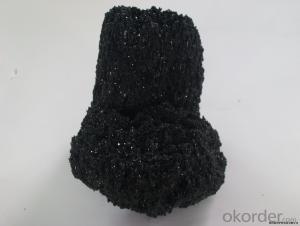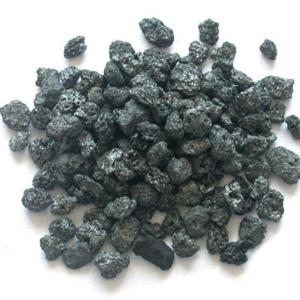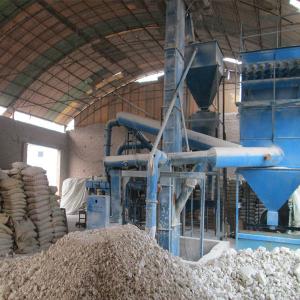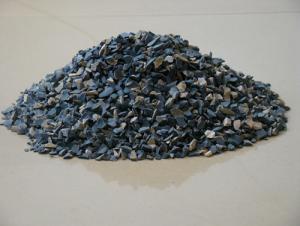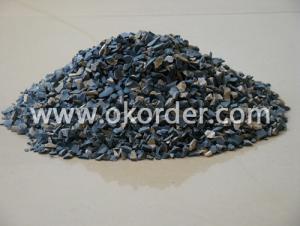Raw Materials for Refractory:Silicon Carbide/SiC Composition in Minerals & Metallurgy
- Loading Port:
- China main port
- Payment Terms:
- TT OR LC
- Min Order Qty:
- 25 m.t.
- Supply Capability:
- 2000 m.t./month
OKorder Service Pledge
OKorder Financial Service
You Might Also Like
Quick Details
| Place of Origin: | Henan, China (Mainland) | Brand Name: | cnbm | Model Number: | 45#,----99# |
| Application: | steelmaking | Shape: | lump/powder/ball/granules | Material: | SiC,H2O,S,P.Fe2O3.F.C |
| Dimensions: | 0-1mm 0-10mm 0-100mm | Chemical Composition: | SiC,H2O,S,P.Fe2O3.F.C | color: | black/green |
| standards: | ISO,GB | shorthand: | Sic | price: | competitive |
| usage: | refractory or abrasives | quality certification: | ISO9001 | SIC content: | 45%min |
| Factory or trade: | factory | delivery: | 15 days | Spot goods: | yes |
Packaging & Delivery
| Packaging Details: | 25kg PVC small bags in a 1 MT big bag |
| Delivery Detail: | Shipped in 15 days after payment |
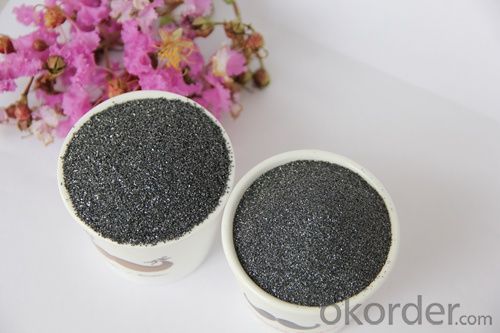
Silicon carbon is a new kind of reinforced steel-making deoxidizing agent and ideal thermal insulating agent.it is used for deoxidizing. The usage dose is 1-4kg/t can make electricity consumption to reduce 15-20kw/h and time to reduce 15-20min per furnace to raise productivity rate to 8-10%.
Advantages:
(1) Large melting furnace, longer melting time, lead to more crystallization, bigger crystals, higher purity and less impurities.
(2) Good hardness, longer life.
(3) Chemical washed and water washed good cleanness.
(4) Special treated products get higher purity, better toughness, and better grinding effect.
Agents wanted
Our company is currently looking for serious distributers from all over the world.
Agent Requirements:
1) Have the good business reputation in the field of ferroalloy.
2) Have the strong abilities to promote our products.
3) Regular orders in every month are promised.
- Q: What is the common inorganic fireproof and thermal inuslation matertial?
- inorganic materials of insulation materials 1, inorganic thermal insulation materials are mainly concentrated in the materials that have a certain insulation effect and can achieve level A fireproofing, such as aerogel blanket, glass wool, rock wool, expanded perlite and micro-nano thermal baffle. 2, rock wool production is harmful to human body, workers also do not want to occure the situation under the construction. The cycle of rock wool construction plate is long about 2 years from construction to production. The supply of the domestic wool market also cannot meet the requirements for use. 3, expanded perlite has great weight and high water absorption. 4, the insulation performance of micro-nano insulation panels is 3-5 times that of conventional insulation materials, commonly used in high temperature environment, but is more expensive. 5, aerogel blanket is level A1 inorganic fireproofing building materials, thermal conductivity at room temperature is 0.018W / (K · m), and absolutely waterproofing, its insulation performance is 3-8 times of traditional materials, which can replace the unenvironment-friendly froconventional flexible material with poor insulation properties, such as glass fiber products, asbestos insulation felt and silicate products.
- Q: Does anyone know the refractory temperature of fire-resistant glass?
- Ordinary glass will burst under sharp temperature difference of about 70-120 degrees and toughened glass of 200 degrees. It is not yet clear for the bursting temperature differences of the refractory glass. If the overall glass is heated evenly, it will have no significant change below 600 degrees, and it will deform with the increase of temperature until melting. The fire-resistant time of the glass you said is the time to heat the glass into the extreme temperature differences it can endure, which should not be more than 10 minutes
- Q: Why the refractories should be waterproof and wetproof
- It is necessary to like magnesium carbon, waterproof and wetproof is more important. There is a variety of refractory materials, in general, basic is defective, and wherein the binder and additives water will lose their effect, the relationship is not very high aluminum large amount of water determines how much of the performance after the hydration will affect the strength and high temperature performance ;; hydration & quot, just need a little package like magnesium and calcium-based product itself readily react with water to calcium oxide, magnesium, chromium is not all the material goods have waterproof ordinary bulk materials need to add water before use
- Q: Which industry does refractory belong to? Does it belong to construction industry?
- I am engaged in construction. Refractory material does not necessarily belong to construction industry. Fire resistance is only a part of material?performance. Indeed, there are many places requiring refractory accorded with fire resistant level.
- Q: What dose the fireproof and thermal insulation material include?
- Protective cloth, fireproof cloth, plastic coated cloth, PVC tarpaulin, flame retardant cloth, duct cloth, automobile tarpaulin, PVC protective cloth, the freight yard covered cloth, PVC plastic coated cloth, Industrial Canvas, widely used in automobile tarpaulin, trains covered cloth, ships covered cloth, open-air yard covered cloth, industrial and agricultural covered cloth ; used in glass, timber, fertilizer plants, steel plants, mechanical hardware factories, feed mills, grain storages, container plants, oil refineries plants, packaging plants, paper plants, air conditioning plants, logistics, ore factories, fleet, rail and sea fields, etc.
- Q: What's the B grade fireproofing material?
- Grade B: rubber and plastic, extrusion molding, polyphenyl, PEF. organics, extruded sheet, polyphenyl board, phenolic resin. Hairong modules (thermal insulating and fireproof material) can reach grade B1 in fireproof performance.
- Q: How to measure the influence of high-temperature performance of the products refractory in the formation of the liquid phase.
- Seeing whether it can affect the usage of the refractory material, and seeing to reduce the impurity, what's the condition of temperature of the liquid phase. Practically, whether it has any difference if you can improve, load under load and creep and reduce the impurity content. In the refractories, producing liquid are the influence of impurities, high temperature resistant strength, compared the use of the refractory material temperature: testing compressive strength after burn. If there are any impact: knowing the main crystal phase of matrix composition and content, improving the content of the main crystalline phase can improve the high temperature performance of refractory materials.
- Q: What are the construction fire-proof materials?
- 1. fire?retardant?coating 2. fireproof?panel 3. fire proof and sealing material 4. flame resisting decorative materials 5. Green fire prevention materials
- Q: What refractories can withstand high temperature above 2100 degrees?
- Well, what can you heat to 2100 degrees? ? The dryer? What you used are all substance of low-melting point, which cannot withstand even 1000 degrees. "Is the maximum temperature of refractory bricks 1500 degrees?" Do you mean refractoriness or operating temperature? Firstly, a dryer is impossible to reach 2100 degree. If it does, you might as well use high chrome brick for oxidizing atmosphere. You can use silicon?nitride brick for non-oxidizing atmosphere. But I guess it is enough for you to use clay brick, but the price differs a lot! ! !
- Q: Who knows about the B-level fireproof insulation materials?
- Organics, extruded sheet, polyphenyl board and phenolic resin. The fireproof?performance of sea capacity module (fireproof and thermal insulation material) is B1-level with the heat conductivity coefficient of only 0.028w / m · k. It is a good choice. A-level: Rock wool, glass wool, silicate, aluminum silicate, calcium silicate, phenolic aldehyde, and foam glass. B-level: Rubber and plastic, extrusion molding, polyphenyl, PEF.
Send your message to us
Raw Materials for Refractory:Silicon Carbide/SiC Composition in Minerals & Metallurgy
- Loading Port:
- China main port
- Payment Terms:
- TT OR LC
- Min Order Qty:
- 25 m.t.
- Supply Capability:
- 2000 m.t./month
OKorder Service Pledge
OKorder Financial Service
Similar products
Hot products
Hot Searches
Related keywords
